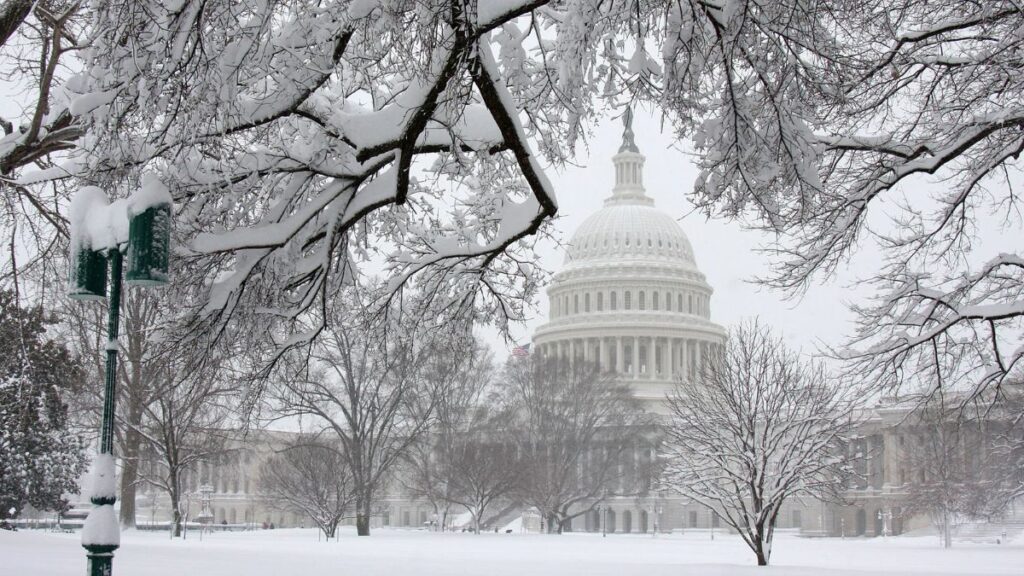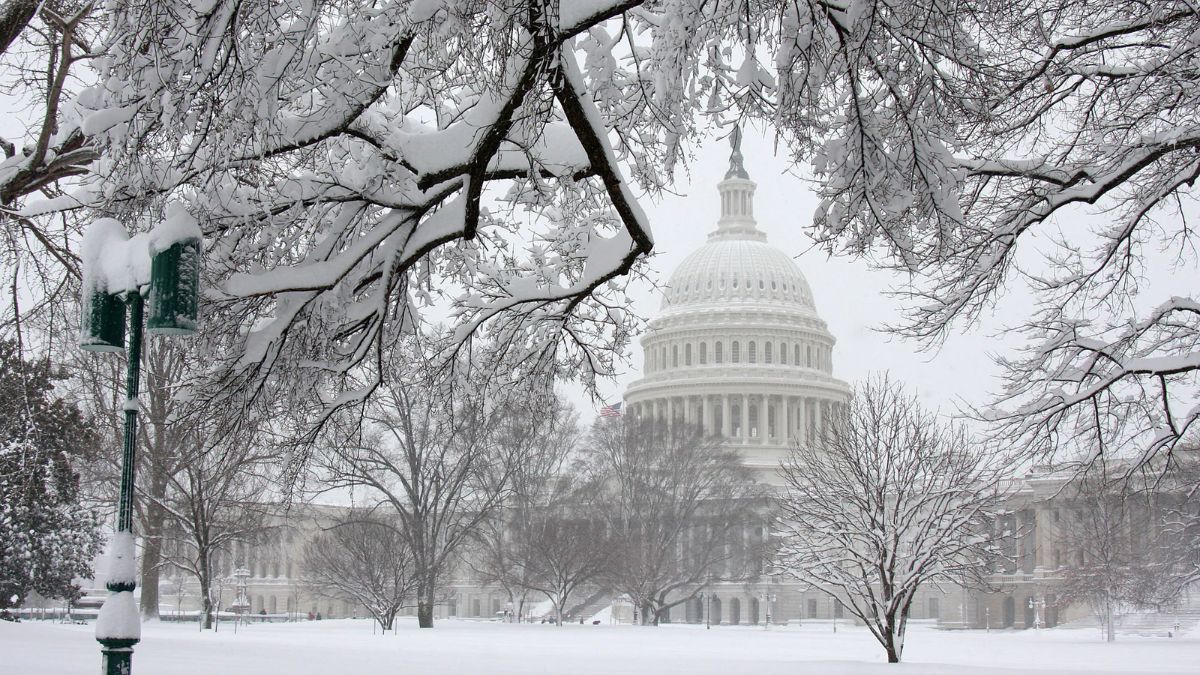Yes, it does snow in Washington, D.C. The city experiences winter weather, and snowfall is part of its seasonal climate. However, the amount of snowfall can vary significantly from year to year. On average, Washington, D.C., receives around 15 inches of snow annually. Some winters may have minimal snowfall, while others can bring significant snowstorms that can disrupt daily life in the city.
Washington has a rich history, iconic landmarks, and vibrant culture. Due to its diverse geography and climate, the city experiences a variety of weather patterns throughout the year.

However, one question that often arises is whether or not it snows in Washington, D.C. Let’s explore the snowfall patterns in the nation’s capital and provide insights into the winter climate of Washington, D.C.
Location Overview
Washington, D.C. is the capital city of the United States and is located on the east coast of the country. It is situated on the banks of the Potomac River, bordered by the states of Maryland to the north and Virginia to the south.
The city covers an area of approximately 68.34 square miles and is known for its iconic landmarks, historic sites, and vibrant culture. The city’s layout is characterized by wide avenues, numerous parks, and grand monuments.
The National Mall, a sprawling park in the center of the city, is home to famous landmarks such as the Washington Monument, Lincoln Memorial, and the U.S. Capitol building. It serves as a symbolic and ceremonial focal point for the nation.
Overall, Washington, D.C., offers a unique blend of history, politics, culture, and natural beauty. Its prominent landmarks, world-class institutions, and diverse communities make it a popular destination for tourists and a vibrant place to live.
Geography and Climate of Washington, D.C.
Washington, D.C. is located in the mid-Atlantic region of the United States, specifically on the east coast. It is situated on the northern bank of the Potomac River, which serves as a natural boundary between the city and the neighboring state of Virginia.
The city is characterized by a grid-like street layout, with wide avenues intersecting at right angles. The city’s streets are organized into four quadrants: Northwest (NW), Northeast (NE), Southwest (SW), and Southeast (SE), with the U.S. Capitol building serving as the center point.
The topography of Washington is relatively flat, with an average elevation of around 39 feet above sea level. The city’s terrain primarily comprises low-lying plains and gently rolling hills. The highest natural point in the city is Tenleytown, which reaches an elevation of approximately 410 feet above sea level.
Water plays a significant role in the geography of Washington, D.C. The Potomac River borders the city to the west, providing recreational opportunities and scenic views. The Tidal Basin, an artificial reservoir, is located near the National Mall and is famous for its cherry blossom trees.
Washington lies in the transitional zone between the humid subtropical climate of the South and the continental climate of the North. This unique position affects the region’s weather patterns, including snowfall.
The city experiences four distinct seasons. Summers are hot and humid, with temperatures averaging in the 80s to 90s Fahrenheit. Spring and fall bring milder temperatures and colorful foliage.
Winters in Washington are generally cold, with temperatures ranging from the 30s to 40s Fahrenheit, although it can occasionally drop below freezing. Snowfall occurs during the winter season, but the amount and frequency can vary from year to year.
Historical Snowfall Record
The history of snowfall records in Washington, D.C. spans several decades, providing insights into the city’s winter weather patterns and notable snow events. Here are some key highlights of the snowfall record:
- Largest Snowfall on Record
The largest snowfall on record in Washington, D.C. occurred during the “Knickerbocker Storm” on January 27-28, 1922. This historic blizzard brought a staggering 28 inches (71 cm) of snow to the city, resulting in tragic consequences.
The weight of the heavy, wet snow caused the roof of the Knickerbocker Theatre to collapse, resulting in the loss of 98 lives and injuring more than 100 people.
- Snowmageddon – February 2010
One of the most notable recent snow events in Washington, D.C. was the winter storm that hit the region in February 2010. This storm, often referred to as “Snowmageddon” or “Snowpocalypse,” dumped significant amounts of snow on the city.
Official measurements recorded 17.8 inches of snowfall, paralyzing the city and causing widespread disruption to transportation and daily life.
- Snowmageddon II – January 2016
Another major snowstorm struck Washington, D.C. in January 2016, earning the name “Snowmageddon II” or “Snowzilla.” This storm brought heavy snowfall and blizzard conditions to the region.
The official snowfall total at Reagan National Airport was 17.8 inches, tying the record set during the 2010 storm. Some areas in the surrounding suburbs reported even higher accumulations.
Winter Season & Snowfall Pattern
Snowfall in Washington, D.C., can vary significantly from year to year. Some winters see minimal snowfall, with only a few inches recorded throughout the season. The average annual snowfall in the city is around 15 inches, but individual years can deviate from this figure.
The city typically experiences snow on an average of 8-10 days per year, spread out across the winter season. The most common months for snowfall are December, January, and February, with the highest probability of significant snow occurring during January.
Locations to Enjoy Snow
Washington, D.C., and its surrounding areas offer several locations to enjoy the beauty and activities associated with snow. Here are some places to consider:
- Rock Creek Park
Located in the heart of the city, Rock Creek Park offers a serene winter landscape with scenic trails perfect for winter walks, snowshoeing, or cross-country skiing. The park’s picturesque views and peaceful atmosphere make it an ideal place to enjoy the snow-covered scenery.
- Great Falls Park
Situated along the Potomac River, Great Falls Park offers stunning views of icy waterfalls during the winter months. While the park itself may not have designated snow activities, the surrounding trails provide opportunities for hiking and photography amidst the winter landscape.
- National Mall
When Washington, D.C. experiences snowfall, the National Mall transforms into a magical winter wonderland. The iconic monuments and memorials covered in snow create a unique atmosphere for a peaceful walk or even a snowball fight with friends and family.
- Capitol Hill
The area surrounding the U.S. Capitol building, known as Capitol Hill, offers charming streets and historic buildings that look particularly enchanting under a blanket of snow. Take a stroll and admire the snow-covered row houses, or visit the nearby Capitol Reflecting Pool, which offers a beautiful winter backdrop.
- Mount Vernon
Located just outside of Washington, D.C., Mount Vernon is the historic estate of George Washington. During the winter, the grounds of Mount Vernon take on a serene beauty, and if you are lucky, you may experience a dusting of snow on the iconic mansion and gardens.
- Snowshoe Mountain
If you are looking for a more immersive winter experience, consider visiting Snowshoe Mountain in West Virginia. Located approximately three hours from Washington, D.C., Snowshoe Mountain offers a range of winter activities.
- Wisp Resort
Another option for winter sports enthusiasts is Wisp Resort, located in Maryland’s Deep Creek Lake area. Approximately three hours from Washington, D.C., Wisp Resort is a great destination for a day trip or a weekend getaway.
Conclusion
While Washington, D.C. does not receive as much snowfall as cities in the northern part of the country, it does experience winter weather and occasional snowstorms. The average snowfall of 15 inches per year, combined with the city’s unique climate, means that residents and visitors should be prepared for winter conditions.
